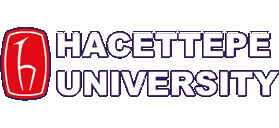| Obligation |
: |
Elective |
| Prerequisite courses |
: |
ELE120 |
| Concurrent courses |
: |
- |
| Delivery modes |
: |
Face-to-Face |
| Learning and teaching strategies |
: |
Lecture, Question and Answer, Experiment, Problem Solving |
| Course objective |
: |
Microprocessors are used in places where microprocessors are high power demanding expensive and too high power for the application. In this course the students are thought the principles of microprocessor interdisciplinary applications. Some of the course topics are implemented in a project done by the student (groups) within a limited time frame. A popular microcontroller will be used for class work implementations. |
| Learning outcomes |
: |
A student who completes the course successfully will solves the encountered analog or digital problem in the microcontroller platform in hardware and software. Finds solutions to the problems within a group while working on a projec |
| Course content |
: |
Intro to Embedded systems Microcontrollers Embedded C Real time operating systems and Embedded Operating system design Multistate Systems Interfacing external devices Serial I/O applications Advanced Microcontroller Applications |
| References |
: |
Jiménez, Manuel, Palomera, Rogelio, Couvertier, Isidoro; Introduction to Embedded Systems Using Microcontrollers and the MSP430, Springer. ; Nagy C, Embedded Systems Design Using the TI MSP430 Series, Elsevier. Davies J, MSP430 Microcontroller Basic, Newnes.; |
Matrix Of The Course Learning Outcomes Versus Program Outcomes
| Key learning outcomes |
Contribution level |
| 1 |
2 |
3 |
4 |
5 |
| 1. |
Possesses the theoretical and practical knowledge required in Electrical and Electronics Engineering discipline. | | | | | |
| 2. |
Utilizes his/her theoretical and practical knowledge in the fields of mathematics, science and electrical and electronics engineering towards finding engineering solutions. | | | | | |
| 3. |
Determines and defines a problem in electrical and electronics engineering, then models and solves it by applying the appropriate analytical or numerical methods. | | | | | |
| 4. |
Designs a system under realistic constraints using modern methods and tools. | | | | | |
| 5. |
Designs and performs an experiment, analyzes and interprets the results. | | | | | |
| 6. |
Possesses the necessary qualifications to carry out interdisciplinary work either individually or as a team member. | | | | | |
| 7. |
Accesses information, performs literature search, uses databases and other knowledge sources, follows developments in science and technology. | | | | | |
| 8. |
Performs project planning and time management, plans his/her career development. | | | | | |
| 9. |
Possesses an advanced level of expertise in computer hardware and software, is proficient in using information and communication technologies. | | | | | |
| 10. |
Is competent in oral or written communication; has advanced command of English. | | | | | |
| 11. |
Has an awareness of his/her professional, ethical and social responsibilities. | | | | | |
| 12. |
Has an awareness of the universal impacts and social consequences of engineering solutions and applications; is well-informed about modern-day problems. | | | | | |
| 13. |
Is innovative and inquisitive; has a high level of professional self-esteem. | | | | | |
